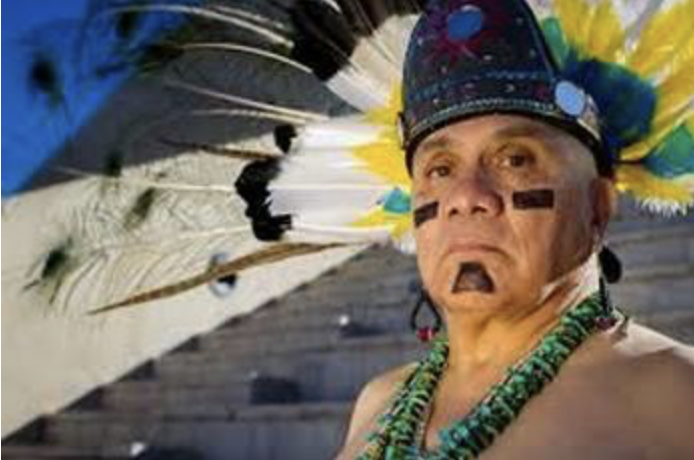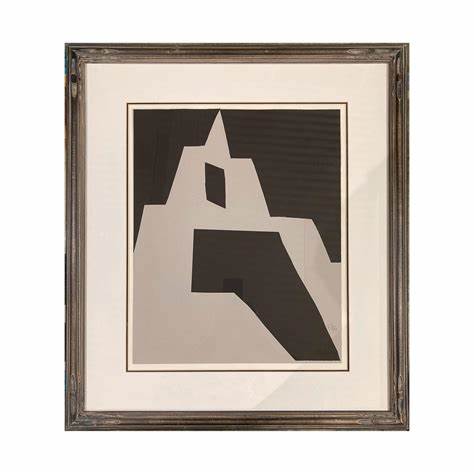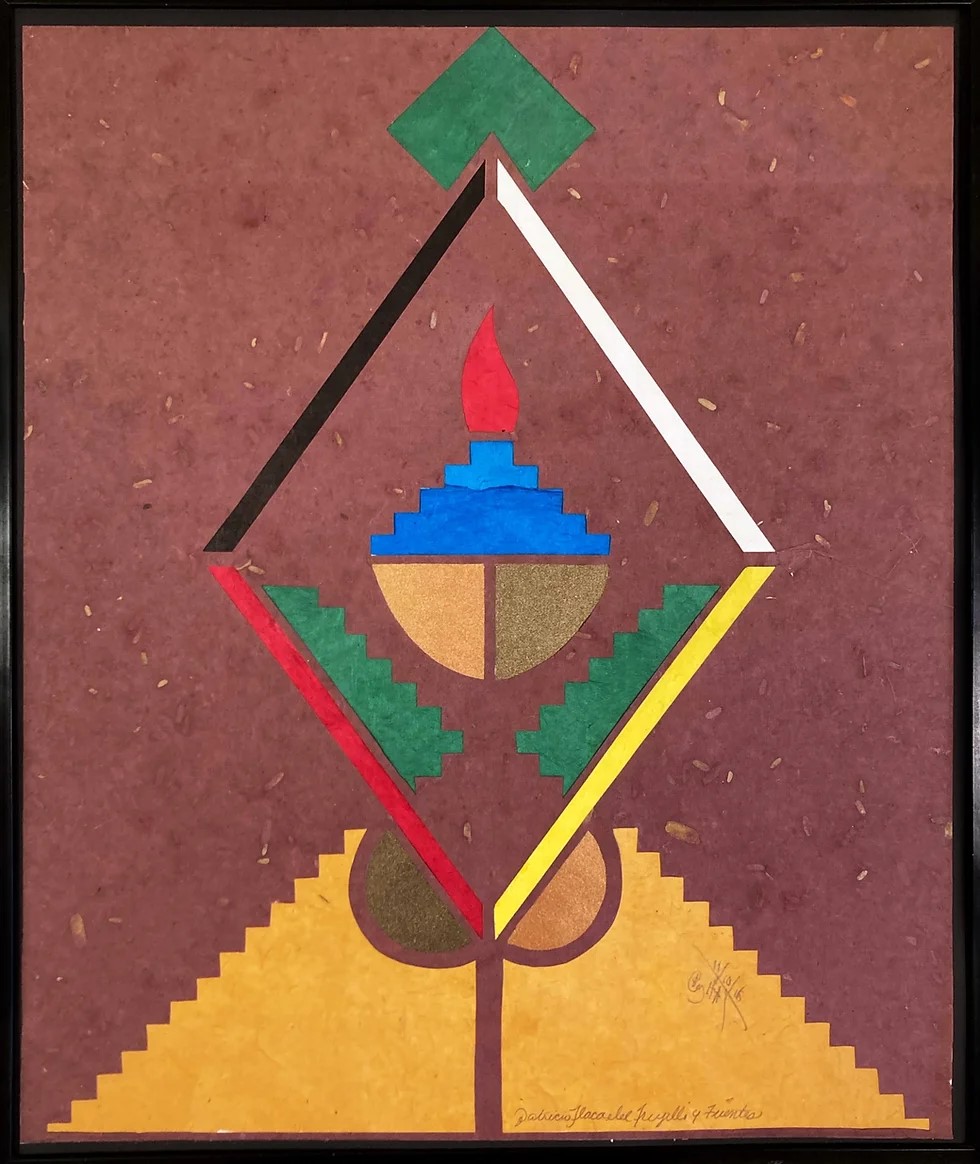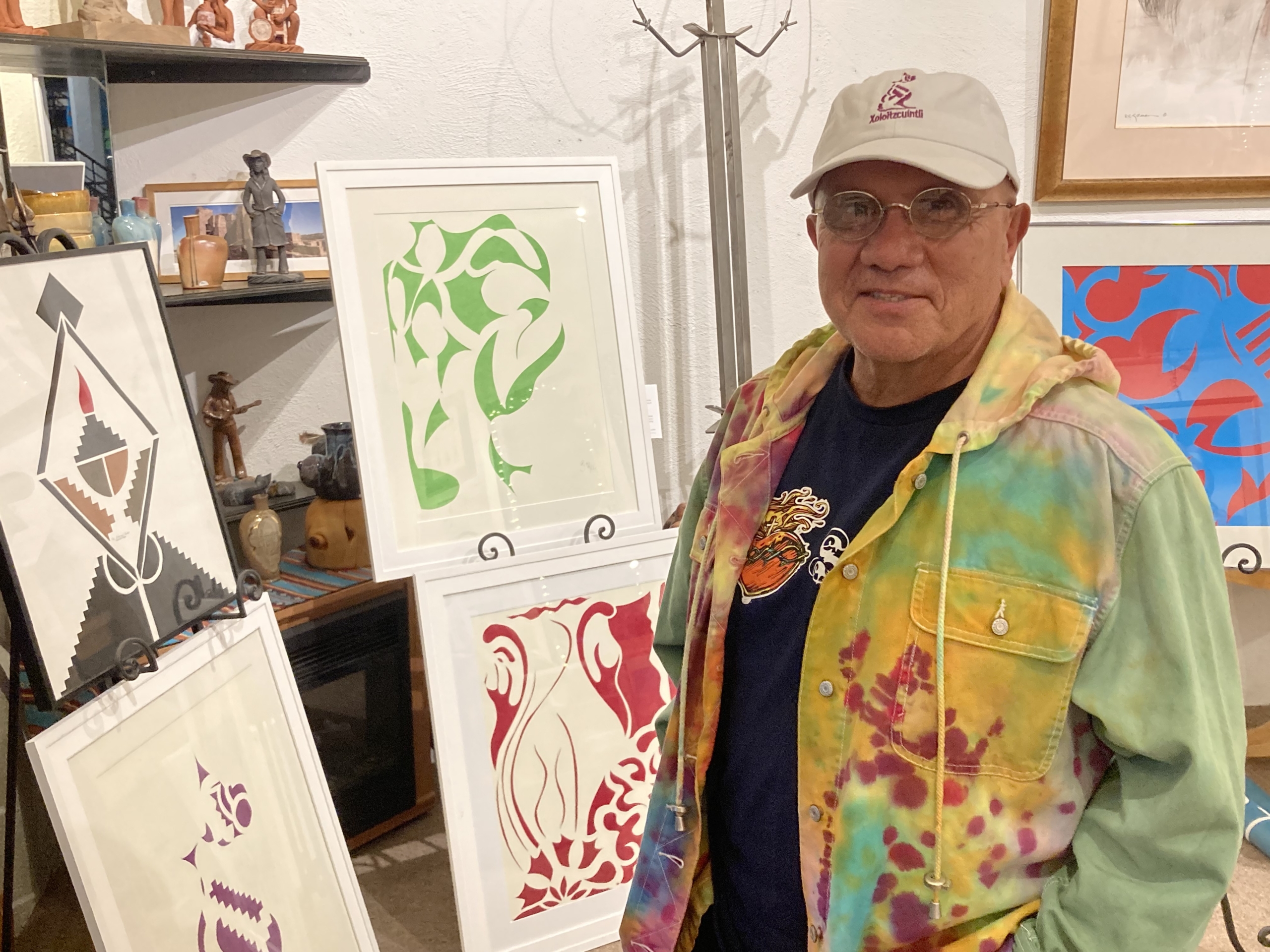
A fascination with paper in all its aspects: its texture, color, and history all speak to Chicano artist Patricio Tlacaelel Trujillo y Fuentes and give him a voice to share their whispers with the viewer.
With rice paper, construction paper, shopping bags, and magazine clippings, Patricio Tlacaelel Trujillo y Fuentes creates beautiful and thought-provoking works that are reminiscent of the traditional papel picado that adorn the fiestas of Meso-America.
Art Business News recently asked Tlacaelel to offer insight into his creativity, style, and career.
ABN: Introduce yourself. Who are you and what’s your artistic vision?
Tlacaelel: My name is Patricio Tlacaelel Trujillo y Fuentes but my birth name is actually Patrick Trujillo. Through the years, my name has morphed into what I call myself today, Tlacaelel, which evolved out of my desire to remain close to my cultural heritage: the Chicano culture. My artistic outlook is based on many years of learning my roots and growing up in the southwestern United States. My history as a Chicano artist is inextricably woven into my cut-paper art.
ABN: What’s your background?
Tlacaelel: I was born and grew up in Pueblo, Colorado, a small town on the banks of the Arkansas River. As a child, I would listen to my father play and sing many of the traditional Mexican songs that would give me a sense of pride. The music my father made served as an introduction to all things aesthetic: music, art, dance, and poetry. I began to cut paper, creating patterns and shapes, which would eventually turn into what I refer to as contemporary papel picado, based on the Mexican tradition of cutting tissue paper to depict images of skeletons, flowers, children on bicycles, and other playful images. The papel picado of Mexico can be found strung above the heads of party-goers at festive celebrations.


ABN: What is your work philosophy and how does that impact your art?
Tlacaelel: I believe that each of us, as we live our daily lives, can write a book about our experiences, our joys, our accomplishments, and our goals in life. For me and my cut-paper art, each piece I make is another page in my life. As the artworks accumulate, they begin to form the tale of my life, another page in the book of my autobiography. The autobiography will continue to evolve until the day I put down the razor blade or scissors for the last time. I’ve been cutting paper since I was five years old, and at 66, I continue to cut paper, exhibiting and promoting my work. Cutting paper gives my life meaning, a purpose, and a sense of leaving a record of my life. Cutting paper is a way of using my frenetic energy to deal with the daily challenges and horrors of life, as well as the joys and accomplishments as I go through life’s rigors. I like the word frenetic because I see my work as frenetic: fast, energetic, and uncontrolled—much like the fauvists of the 20th century.
ABN: What artist(s) inspire you?
Tlacaelel: My work is often inspired by other artists’ works, across disciplines; like modern dance artist Paul Sanasardo, from whom I took dance classes in New York City; concert pianist Douglas Riva, who specializes in the compositions of Spanish composer Enrique Granados; and famed photographer Oscar Lozoya, who’s known for his black and white photography depicting images of Day of the Dead. The beautiful poetry of Garcia Lorca and Rainer Maria Rilke; the way they weave words together inspired me to weave shapes and patterns together in a way that is more sophisticated and detailed than my childhood years. These and other artists have deeply inspired me and influenced my artistic outlook on life, and how I work when making a work of art.
ABN: What’s the best advice you’ve received?
Tlacaelel: I was talking with famed choreographer and modern dance artist May O’Donnell, feeling discouraged about life and process, and she said, “You have to be like a bulldog. Latch on and hold on tight.” This is something I’ll always hold dear to my heart, as I have used those words to give me impetus and resolve in my work. Paul Sanasardo once said to me, “Don’t go looking for a party, be the party.” He also said to me, “Be a strong artist. Work hard and write your own meal ticket.”


ABN: You recently exhibited at Art Santa Fe 2024. Tell us about that experience. Was it your first art fair exhibition?
Tlacaelel: Having been working hard in the studio at a frenzied pace, it dawned on me that I had not been getting the work out—showing or exhibiting it. Surfing through social media, I came across a post by Redwood Art Collective calling for artists for Art Santa Fe 2024. I submitted my work and was accepted. It was the first time I took part in that exhibition and getting works ready for installation was a major undertaking. But it was an exciting opportunity to move in another direction and it has propelled me to newer heights in sales and promotions. I was able to meet other artists, make new connections and affiliations. I plan to take part again next year. As a result of my participation in Art Santa Fe, my works are now hanging in homes and offices in Los Angeles, New York City, and Colorado.
ABN: When you’re not working, where can we find you?
Tlacaelel: I’m always working, whether it be on new artworks or giving workshops and talks about my work. This month I was invited, along with artist Anita Rodriguez, to give a presentation on cut-paper—the process and the history of papel picado, past and present—for the Millicent Rogers Museum in Taos, New Mexico. I’ve also been asked to co-curate an exhibition on Chicano art by a well-known museum—more on that coming up.
When not working on those projects, I work in my studio in Albuquerque. I have plans to perform the poem “Yo Soy Joaquin” by Rodolfo ‘Corky’ Gonzales, which tells the history of the Chicano culture from Aztec times to today. I don’t limit myself by medium.



1 Comments
awesome work